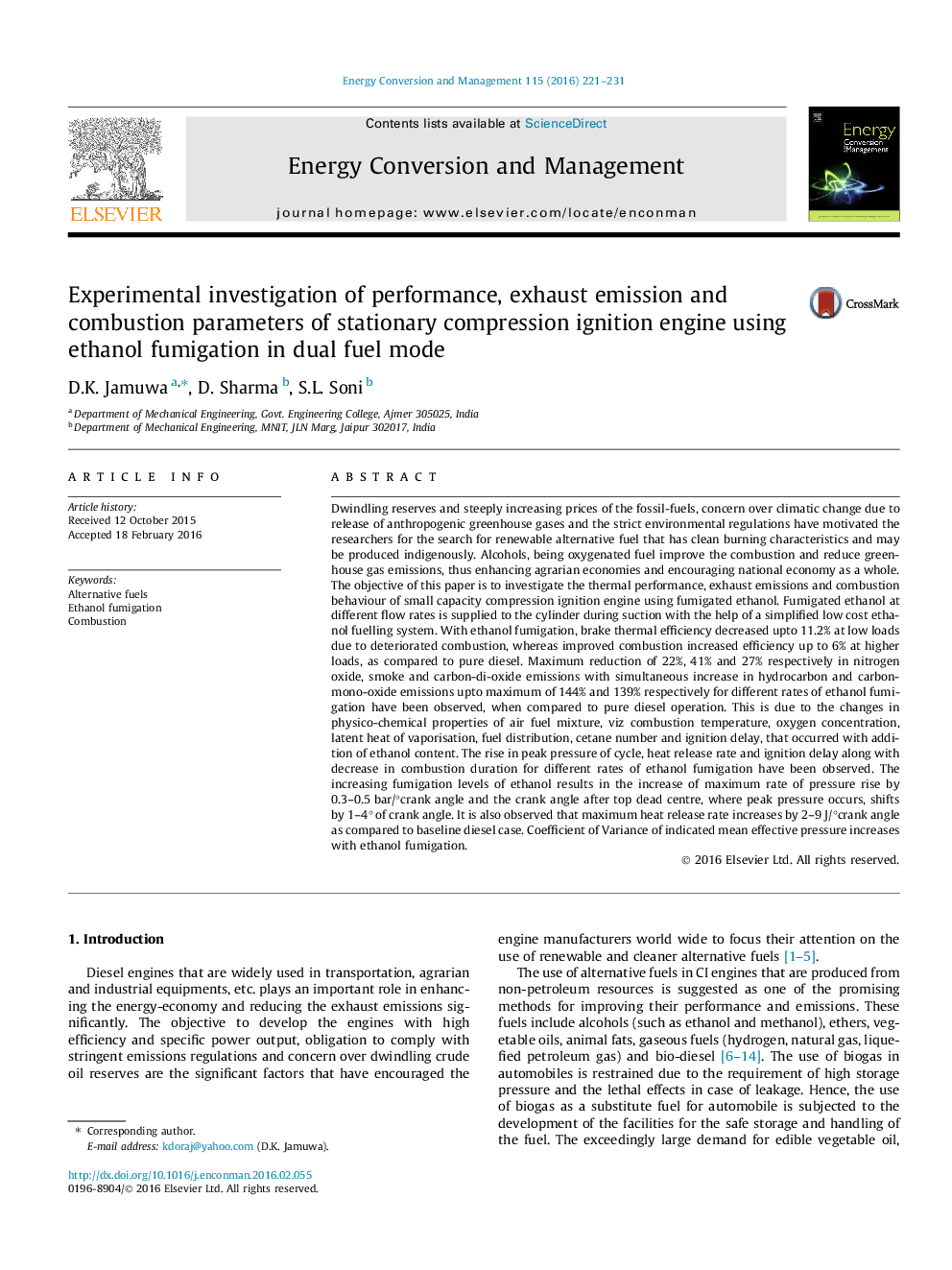| Article ID | Journal | Published Year | Pages | File Type |
|---|---|---|---|---|
| 760313 | Energy Conversion and Management | 2016 | 11 Pages |
•Potential of renewable fuels as diesel replacement is being emphasized.•Effect of ethanol fumigation on the performance of diesel engine is investigated.•NOx, CO2 and smoke decreases with simultaneous increase in HC and CO.•Increase in ignition delay with decrease in combustion duration for ethanol substitution observed.
Dwindling reserves and steeply increasing prices of the fossil-fuels, concern over climatic change due to release of anthropogenic greenhouse gases and the strict environmental regulations have motivated the researchers for the search for renewable alternative fuel that has clean burning characteristics and may be produced indigenously. Alcohols, being oxygenated fuel improve the combustion and reduce greenhouse gas emissions, thus enhancing agrarian economies and encouraging national economy as a whole. The objective of this paper is to investigate the thermal performance, exhaust emissions and combustion behaviour of small capacity compression ignition engine using fumigated ethanol. Fumigated ethanol at different flow rates is supplied to the cylinder during suction with the help of a simplified low cost ethanol fuelling system. With ethanol fumigation, brake thermal efficiency decreased upto 11.2% at low loads due to deteriorated combustion, whereas improved combustion increased efficiency up to 6% at higher loads, as compared to pure diesel. Maximum reduction of 22%, 41% and 27% respectively in nitrogen oxide, smoke and carbon-di-oxide emissions with simultaneous increase in hydrocarbon and carbon-mono-oxide emissions upto maximum of 144% and 139% respectively for different rates of ethanol fumigation have been observed, when compared to pure diesel operation. This is due to the changes in physico-chemical properties of air fuel mixture, viz combustion temperature, oxygen concentration, latent heat of vaporisation, fuel distribution, cetane number and ignition delay, that occurred with addition of ethanol content. The rise in peak pressure of cycle, heat release rate and ignition delay along with decrease in combustion duration for different rates of ethanol fumigation have been observed. The increasing fumigation levels of ethanol results in the increase of maximum rate of pressure rise by 0.3–0.5 bar/°crank angle and the crank angle after top dead centre, where peak pressure occurs, shifts by 1–4° of crank angle. It is also observed that maximum heat release rate increases by 2–9 J/°crank angle as compared to baseline diesel case. Coefficient of Variance of indicated mean effective pressure increases with ethanol fumigation.
